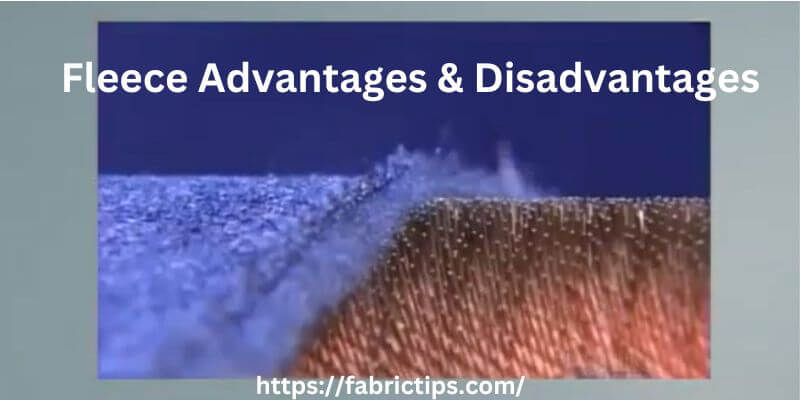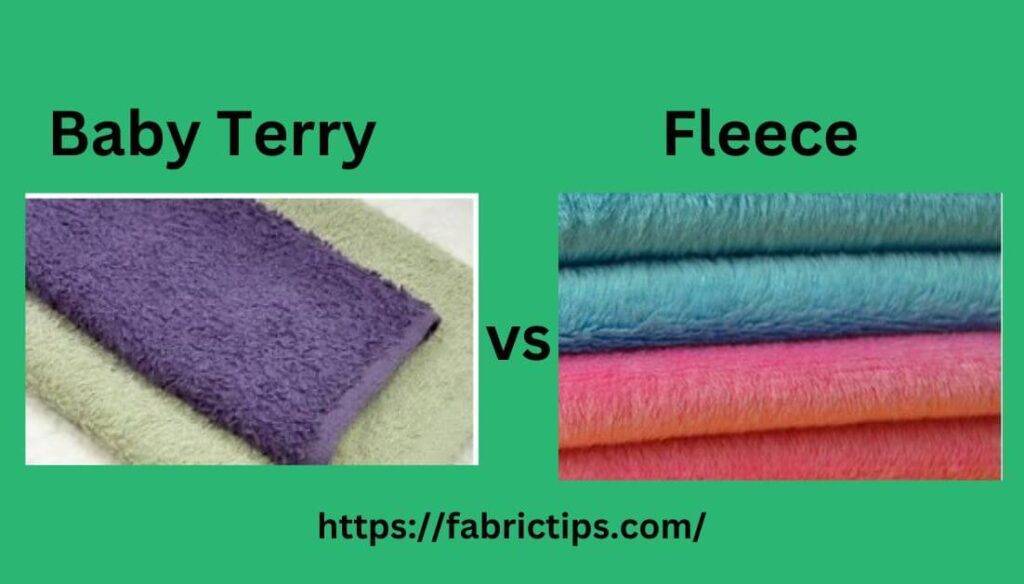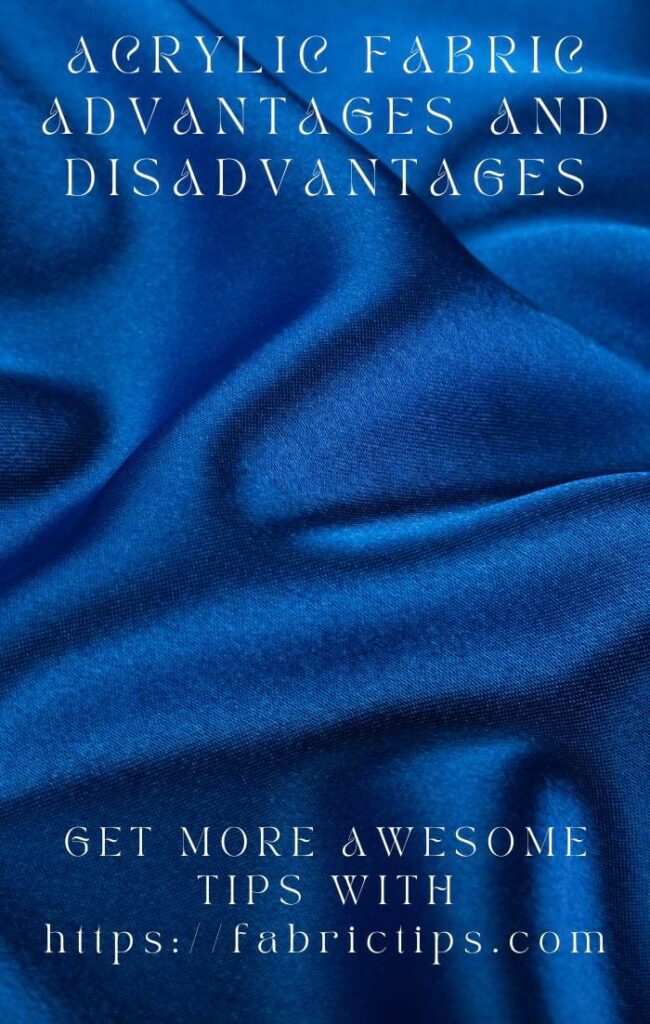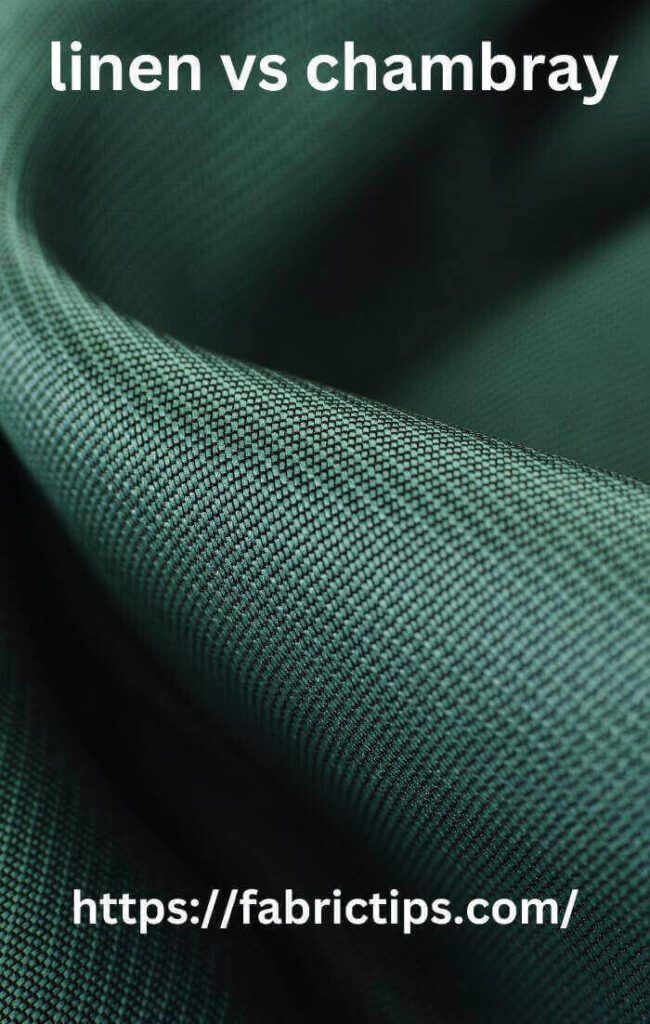Last Updated on December 13, 2025 by Wahid
Baby Terry and Fleece are 2 popular choices for baby clothing materials. The two fabrics both offer unique advantages & have the ability to maintain the comfort and warmth of babies in a number of ways.
Baby Terry Vs Fleece: How are they different? Cotton or a blend of cotton and polyester is used to make Baby Terry, which is a soft, absorbent fabric. It is renowned for having excellent moisture-wicking capabilities, making it ideal for active play and warmer weather baby clothes. In addition, Baby Terry is breathable, which keeps babies comfortable and prevents overheating.
In contrast, fleece, a synthetic fabric made of polyester, is a natural fiber. This fabric is warm and cozy & works well in cold weather. The fleece material is soft and lightweight, making it excellent for making baby clothes like jackets, pants, & blankets as well.
If you are deciding between Baby Terry and Fleece, keep in mind the weather conditions and your baby’s activity level. When your baby is likely to be active or it’s warm outside, you may want to choose Baby Terry. When it comes to staying warm and cozy during colder weather, fleece is a perfect choice.
Baby Terry Vs Fleece: Comparison Chart
Do you want to know what Baby Terry Vs Fleece is all about? The following chart compares the features of Baby Terry and Fleece:
| Features | Baby Terry | Fleece |
| Material: | Cotton or cotton blend | Polyester |
| Softness: | Soft | Very soft |
| Moisture-wicking: | Excellent | Not great |
| Breathability: | Highly breathable | Not good breathable |
| Warmth: | Not very warm | Very warm |
| Weight: | Lightweight | Lightweight |
| Durability: | Good | Very good |
| Stretch: | Limited stretch | Good stretch |
| Uses: | Active wear, warmer weather | Cold weather, cozy wear |
| Care: | Machine washable and can shrink | Machine washable and does not shrink |
However, the final buying decision will be determined by the baby and their caregivers’ needs and preferences.
Baby Terry Vs Fleece: In-Depth Discussion
The debate over the advantages and disadvantages of Baby Terry vs. Fleece fabrics indicates the importance of choosing the right fabric for baby clothes & accessories. When deciding between Baby Terry and Fleece, the baby’s specific needs and preferences should be taken into consideration. In addition, weather conditions and the environment should be considered.
Baby Terry Vs Fleece: Origin

The origin and manufacturing process of Terry Baby and Fleece are different.
Baby Terry fabric was invented in France at the end of the 18th century. Terry is derived from the French word “tirer,” meaning “to pull.” Its fabric consists of loops of yarn woven on one side, creating a soft & absorbent surface. Fabrics made from baby Terry are typically composed of cotton combo is composed of cotton and polyester, and there are different weights and textures available.
Conversely, fleece, invented in the 1970s by Malden Mills, was first used in clothing. The fabric was originally developed as an affordable alternative than wool, historically a material that would be used for warm clothing. A soft, fluffy texture is achieved by brushing polyester fibers together and weaving them together. You can choose from a variety of weights & thicknesses, which are popular because of their comfort and warmth.
Hence, Baby Terry comes from France and has been around for centuries. As one of the most popular choices for clothing during cold weather, fleece is a more recent American invention.
Baby Terry Vs Fleece: Effectiveness

The Baby Terry and the Fleece fabrics can be used for a variety of purposes.
Terry baby is a good fabric for active wear as well as warmer weather. When participating in physical activity, it absorbs sweat well because of its moisture-wicking properties. Warm weather makes babies more comfortable and cool with its breathability. Additionally, Baby Terry is gentle and soft on baby’s sensitive skin, which makes it an excellent choice for clothing and accessories for babies.
However, Fleece, particularly in cold weather, is a good fabric for wearing in the warmth. Due to its synthetic fibers, it is very warm & insulating, making it the perfect winter blanket for babies. As well as being lightweight and soft, fleece also provides great comfort, which is perfect for wearing for long periods of time. Additionally, fleece is easy to maintain and durable, which makes it a great material for hats, jackets, and blankets for babies.
As a whole, Baby Terry and Fleece are excellent fabrics for their intended purposes. Choosing between them will be determined by the baby’s specific needs and the weather conditions to which they will be exposed.
Baby Terry Vs Fleece: Using

Depending on their properties and characteristics, Baby Terry and Fleece can be used for different purposes.
For warmer weather and active wear, the Baby Terry fabric is an excellent option. In addition to being breathable, it is moisture-wicking, suitable for baby clothes used in warm weather or during physical activity. You can use Baby Terry for the following purposes:
- Activewear for babies
- Baby shirts and onesies
- Towels and washcloths
- Bibs and burp cloths
In contrast, fleece, a warm and cozy fabric, is great for cold weather. In chilly weather, it is warm & insulating, perfect for cold-weather baby clothes. There are a variety of uses for fleece, including:
- Pants and leggings
- Jackets and coats
- Hats and mittens
- Blankets and swaddles
In addition to making baby accessories, Baby Terry and Fleece are also good choices for making stuffed animals, such as headbands, booties, and toys as well. Baby Terry and Fleece will be chosen based on how the fabric will be used as well as the baby’s specific needs.
Baby Terry Vs Fleece: Maintenance

Maintaining a baby terry or fleece fabric can be tricky, and you should be aware of some key differences between the two.
Baby Terry:
- The fabric of baby Terry is commonly used for baby clothes and towels because it is soft and absorbent.
- Keeping baby terry fabric clean requires machine washing in cold water & tumble turning at a low temperature.
- Be careful when using fabric softeners and bleach, which may damage and reduce the absorbency of the fabric.
- The iron should only be used if baby terry needs to be ironed, preferably on low heat, without ironing over decorations or designs.
Fleece:
- Fleece is a warm & lightweight fabric commonly found in jackets, blankets, & clothing for cold weather.
- For maintaining fleece fabric, cold water, and low heat washing and drying are recommended.
- Make sure you don’t use fabric softeners, as they can cause the material to lose its insulating properties.
- Whenever you iron fleece, keep the heat to a minimum and do not iron over the artwork or embellishments.
Overall, fleece and baby terry fabrics take little maintenance and are easy to clean. However, following the instructions on the fabric care label will ensure that your fabric lasts for many years to come.
Baby Terry Vs Fleece: Characteristics

Fabrics made from baby terry and fleece have the following characteristics:
Baby Terry:
- The soft and absorbent texture of baby terry makes it a popular fabric for baby outfits.
- It is commonly used for baby clothes, towels, and a wide range of skin-friendly items.
- Both sides of baby terry fabric have loops, giving it a fluffy, fluffy appearance as well as making it absorbent.
- In warmer weather, it is breathable & lightweight, so it is suitable for wearing or using outdoors.
- The durability of baby terry makes it ideal for frequent washing.
Fleece:
- The fleece fabric is a soft, warm, lightweight synthetic fabric.
- Cold-weather gear, such as jackets and blankets, are often made from it.
- On either side of the fleece, it has a fuzzy texture, providing warmth and insulation.
- The material is moisture-wicking, which means it keeps you dry by pulling sweat away from you.
- Machine-washing and drying are possible with fleece.
There are a number of uses for both baby terry and fleece fabrics, both of which are soft and comfortable. Baby terry is soft, absorbent, & gentle on the skin, as opposed to fleece, which is warm and insulating. Choosing the right fabric depends on your understanding of its characteristics.
Baby Terry: Advantages & Disadvantages

Fabrics made from baby Terry have a variety of advantages and disadvantages that should be considered when choosing them for clothing and accessories for babies.
Advantages:
- Soft and gentle for delicate baby skin: Terry baby cloth is made with soft, cotton-like fibers that are gentle on a baby’s delicate skin.
- Absorbent: Terry baby towels are highly absorbent, making them ideal as washcloths, towels, and bibs for babies.
- Breathable: Baby Terry is made from a breathable material, which makes it easy to circulate air, keeping babies comfortable and cool.
- Durable: Terry is an extremely durable fabric that can be washed and worn repeatedly.
Disadvantages:
- A little pricey: Baby Terry is typically more expensive compared to other fabrics, mostly because of its softness and high quality.
- Can shrink: Without proper washing and drying, Baby Terry may be lost its shape and shrink.
- Color restrictions: Baby Terry comes in a limited selection of colors & patterns, so it may not fit everyone’s preferences.
Baby Terry fabric has many advantages that make it popular for clothing and accessories for babies, especially during the summer and for active wear. However, it may not be the best choice for everyone due to its higher cost and limited color options.
Fleece: Advantages & Disadvantages

The fabric fleece offers several advantages and disadvantages when it comes to baby clothes and accessories.
Advantages:
- Warmth and Insulation: Baby fleece can keep them warm and cozy in cold weather.
- Incredibly soft: Fleeces are soft and comfortable, and are gentle on baby’s delicate skin.
- Durable: The material fleece is highly durable and capable of withstanding repeated washings and uses.
- Easily cared for: When it comes to spills and accidents, fleece is easy to care for and dries quickly.
Disadvantages:
- Not breathable: Fleece does not breathe, so babies may feel overheated in warmer weather or when exercising.
- Lacks moisture-wicking properties: Fleece has a difficult time absorbing moisture, which can lead to problems if babies sweat or get wet accidentally.
- Can pill: If you wash and wear fleece repeatedly, small balls of fiber can form, which are called “pills.”
In general, fleece fabric is a popular choice for clothing and accessories for babies, particularly during colder weather. While it is breathable and moisture-wicking, it can be uncomfortable for children in certain circumstances, especially if they are prone to pilling.
Baby Terry Vs Fleece: Which Should You Choose?

It is difficult to determine a clear winner between Baby Terry and Fleece since each fabric offers unique advantages and disadvantages. Therefore, they are better suited to different uses.
During the warmer months, Baby Terry makes an excellent active wear fabric. Besides being breathable, it is moisture-wicking, allowing babies to stay cool and comfortable in hot weather or during physical activity. Additionally, Baby Terry is gentle and gentle on baby’s delicate skin, which makes it a great material for baby garments and accessories.
Alternatively, fleece, makes great cold-weather clothing and keeps you warm. It keeps babies warm and cozy in cold weather since it is warm and insulating. Additionally, fleece is comfortable and easy to clean, which makes it an ideal material for clothing and accessories for babies.
Baby Terry and Fleece fabrics can be selected depending on the baby’s specific needs & intended use. A Baby Terry may be a better option for an active baby or in warm weather. Fleece is the best material for babies who need to stay warm and cozy in cold weather. Ultimately, depending on the situation, both fabrics are excellent choices for baby clothing and accessories.
FAQs
Q: Is Baby Terry fabric suitable for colder weather?
A: Yes. It is generally recommended to use Baby Terry fabric in warmer weather because of its breathability and moisture-wicking properties. But, colder weather may not require as much warmth as it provides.
Q: Is Fleece fabric safe for babies?
A: Yes, fleece fabrics are safe for babies. However, make sure the fleece you choose is processed without any harmful chemicals and does not contain any potential hazards.
Q: Can Baby Terry and Fleece fabrics be mixed together in one clothing item?
A: Yes, fleece and Baby Terry fabrics can be mixed together in one garment, for example in a jacket and hoodie. In this way, both warmth and breathability can be provided, depending on where the fabrics are placed.
Q: How do I care for Baby Terry and Fleece fabrics?
A: Baby Terry and Fleece fabrics need only be washed in cool or warm water and tumble dried on low heat. Keep away from fabric softeners and bleach, since they can damage your fabric. You should also refer to the care instructions provided with the fabric.
Q: Can baby bedding be made from Baby Terry and Fleece fabrics?
A: Of course, Baby Terry and Fleece fabrics both make great bedding, including blankets & sheets. However, babies should wear high-quality, safe fabrics and use safe sleep practices to prevent SIDS.
Q: Which fabric is better for newborns, Baby Terry or Fleece?
A: Depending on the situation, both Baby Terry and Fleece fabrics are suitable for newborns. Baby Terry is best suited to warm weather and active wear, whereas fleece is more suitable for cooler weather and cozy clothing. While choosing fabrics, it is crucial to make sure they are comfortable and safe for newborns.
Q: Are Baby Terry and Fleece fabrics suitable for hats and mittens for babies?
A: Sure, baby accessories such as hats and mittens can be made out of Baby Terry and Fleece fabrics. If you prefer active wear or warmer weather, Baby Terry is a great choice, whereas Fleece is more suitable for cooler weather.
Q: Is one fabric better for sensitive skin?
A: Fleece and Baby Terry fabrics are both generally suitable for sensitive skin. However, the fabric must be made from high-quality, non-toxic materials, and consideration should be given to specific sensitivities.
Final Word
As a final note, Baby Terry and Fleece fabrics each have their own unique advantages and disadvantages, providing different options for baby clothes & accessories. Baby Terry offers better breathability and moisture-wicking, making it a great option for warmer weather and active wear. A fleece garment is more durable and insulating, making it a good option for colder weather.
Ultimately, Baby Terry vs Fleece depends on the specific needs and preferences of the baby, as well as the situation. Choosing high-quality fabrics is important to ensure comfort and safety for the baby, as well as to ensure the clothing and accessories last for as long as possible.
By carefully weighing the benefits and drawbacks of Baby Terry and Fleece fabrics, parents are better prepared to make the right choice. By doing this, they will be able to dress and accessorize their baby in a way that will be comfortable and practical.


